Rare are the occasions in life on which just one solution fits all, even when it comes to BMWs that have four doors and five seats and which can fire you at the horizon with broadly the same conviction as a bullet that has just appeared out of a gun.
Because for every fast factory BMW, there is inevitably an alternative available from Alpina. And in this case the alternative is genuinely quite some weapon.
So we posed one very simple question to which the answer is anything but straightforward. In a fast BMW 3-series – a very fast BMW 3-series – which is the best form of engine to have thumping away beneath the bonnet: petrol or diesel?
At one time the answer would have been an entirely predictable ‘petrol’, thank you very much, move on, nothing else of interest to be seen here. Nowadays, though, with the advent of the monster that is the Alpina D3 Biturbo, the answer is nowhere near as simple as that. Not even when the petrol-powered 3-series comes in the form of the mostly brilliant new BMW M3.
The similarities between these two ultimate 3-series are, of course, many, which is hardly surprising given that they share the same fundamental bodyshell, the same rear-wheel drive chassis, the same suspension layout and the exact same cabin and boot dimensions.
But beyond these elements they go about achieving what they do in very different ways from one another, and in the end those disparities are, in places, quite shockingly apparent.
The M3 is propelled by a twin-turbocharged 3.0-litre straight six petrol engine that produces a full 425bhp along with a decent slug of torque – 406lb ft, no less, between 1800 and 5500rpm. It also has the ability to rev to 7500rpm and beyond.
The D3’s twin-turbo six-pot diesel engine, on the other hand, is all done by 5000rpm, and although it summons rather less power than the M3 (345bhp), it has massively more torque up its sleeve. The amount it produces is almost hilarious, in fact, with an eye-watering 516lb ft being available from just 1500rpm.
So despite the fact that the 1660kg D3 weighs a touch more than the 1635kg as-tested M3, in theory it can all but level with the factory car in a straight line.
Its standard automatic gearbox also has one more ratio to play with than our M3 test car’s optional seven-speed dual-clutch automatic unit, but crucially, the Alpina costs a not insignificant £9225 less than the M3.
Perhaps an even bigger difference between them is the way their respective chassis, steering and suspension systems have been tuned to behave once on the move. Both can be adjusted electronically through a variety of programs to become sportier or more comfortable, depending on the kind of road you’re driving on. But in all of its various modes, the M3 always feels the sportier of the two.
It has a thicker, slightly bigger steering wheel than the D3, and there are three different weights that can be dialled up to suit the desires of whoever happens to be grasping it. But no matter which setting you put it in, the M3 always feels more urgent, more uptight, keener to let rip and, perhaps, also a touch more neurotic beside the more relaxed and slightly less manic D3.
And right there is the key difference between these two super-swift 3-series. Their characters, despite appearing to look quite similar to one another outwardly, couldn’t be more opposed on the inside.
At its heart, the M3 feels like a wild dog that’s straining continuously against its leash; the D3 is the cuddly old hound that has seen it all, done it all and doesn’t appear to be interested in doing much beyond what you ask it to.
Yet when you put them side by side, stick their respective gear selectors in D and nail their fly-by-wire throttles – the M3’s is engineered to feel heavier and requires a bit more of a shove – they both take off with a similarly phenomenal level of thrust. The softer D3 initially gets off the line that little bit better, feeling not unlike a jet aeroplane does when the pilot gives it the beans at the end of the runway before take-off.
Read the full Alpina D3 Biturbo review
The sense of acceleration is monumental but – and this is the deliciously weird bit about the D3 – it is accompanied by almost no noise whatsoever beyond a faint thrum from the tyres and an even more distant rumble from the straight six engine.
As a result, you feel like you’re gliding towards the horizon, riding upon a tidal wave of unseen and unheard but still vast physical energy. At its peak, between 2000 and 4000rpm in fourth gear, the D3’s acceleration actually seems quite surreal.
But it’s also a magnificent thing to experience, and when you’ve sampled what it can do to a straight piece of road just once, you inevitably want to come back for more.
The M3’s more explosive, noisier, less regal style of performance could not be more different from that of the D3 if it tried. Getting it off the line is nowhere near as easy, though.
Give it everything (with the traction control turned off) and it will light up its rear tyres and you’ll just sit there, going nowhere, amid a hail of admittedly pretty dramatic-looking wheelspin. Everything the M3 does, it does more urgently. And louder. Much louder.
Once it leaves the line, the revs soar far more quickly than they do in the D3 and the whole car feels immediately more dramatic. When it changes gear, the M3 also feels more savage, a full-bore upshift being accompanied by a fairly obvious thump in the back rather than the lazier, more refined slurring of ratios in the D3.
And eventually the M3 will overhaul the D3, just about, with 0-62mph taking 4.1sec against the Alpina’s 4.6sec, with three figures arriving in around 9.0sec instead of a whisker over 10.0sec for the D3.
The way they get there, and the way they feel and sound and respond to your inputs on the way there, is entirely different. But the actual pace that they can summon is, as we discovered, spookily similar. And not just in a straight line.
Again, the D3 seems far softer, smoother, more relaxed and less overtly dynamic than the M3 when cornering. Its variable-ratio rack has neither the feel nor the turn-in bite of the M3’s, and to begin with the D3’s nose is more difficult to aim accurately towards an apex as a result.
But the harder you push the D3, the more keyed into the road it feels and the better it reacts – and never more so if you thumb the magic button down by the gear selector and put it into Sport+ mode, which stiffens the dampers, alters the weight and response of the steering, crispens the throttle map and makes the gearchanges happen both faster and more smoothly.
Only then does the Alpina feel properly lit, and only at that point does its otherwise majestic ride quality take half a step towards going right out of the window, which is a pity.
But even in its most aggressive setting, the D3 still feels more refined and relaxed on the road beside the M3. It feels more like a very fast limo that just so happens to be able to go around corners rather well as a side benefit, not like a sports car that has four doors and a boot. Which is precisely what the M3 feels like in comparison.
Watch the BMW M3 versus Alpina D3 video
There’s no question that the M3 feels, and indeed is, the more exciting of the two cars to drive. Its responses to your inputs at the steering wheel, throttle, brake pedal and gearchange paddles are all quicker and more immediate.
It slices into corners and clings to the road once committed to them in a way that the D3 doesn’t even attempt to level with. And its acceleration is more visceral, too. But there’s a range of ‘buts’ that accompany the M3’s every move, some of which are drawn into sharp focus when sampled next to the D3.
First, the noise the BMW makes under hard acceleration may be louder than that of the near-silent D3, but it is not necessarily a more exciting one. After a while, in fact, you end up wanting to turn the volume button down, because the sound itself, while loud, isn’t a terribly pleasant one to listen to.
Second, the M3’s ride becomes pretty fruity on some UK roads, and that’s merely in isolation. Beside the infinitely more soothing D3, the quality of the M3’s ride can sometimes seem faintly ridiculous.
Third, the M3’s differential behaves in a very aggressive manner if you turn the traction control off and really start hooning around in the car.
Combined with the car’s even more aggressive mid-range torque delivery, this can make the M3 feel a bit too wild for its own good at times. And again, the D3’s more friendly delivery, allied to our test car’s optional and less aggressive limited-slip diff, makes it a much more approachable car near the limit.
Fourth, the factory car might have a few more toys to play with inside as standard, but a price gap of almost £10,000 is not a factor that can be brushed easily to one side and ignored. It matters, basically.
And then, of course, there is the as-yet unmentioned elephant in the room that is the M3’s relative thirst and subsequent inferior touring range beside the D3, which in the place we refer to as the real world is surely one of the considerations to bear in mind when buying a sporting saloon in 2014.
On paper, the M3 will do 34mpg on the combined cycle, the D3 53.3mpg. In reality, however, the D3 returns mid to high-40s on motorway runs and rarely does less than 35mpg no matter how maniacally you drive it. In the meantime, the M3 will seldom better 30mpg and frequently dip below 20mpg if driven with gusto. Which means their respective ranges are at least 250 miles apart.
The verdict
So in the end, it all adds up. The D3 is not as thrilling a car to grab by the scruff and take for one last blast across a dry, empty mountain road, and it isn’t meant to be. And if someone else is also paying for your fuel, your rear tyres, your insurance and so on, then it is unquestionably the more engaging car to drive.
But the D3 just grinds it down gradually, and as a machine to use and drive and pay for and enjoy every day, I genuinely think it would be the better car for most people. Certainly it’s the more refined car in day-to-day use, and there can be no doubting its extra economy, its cheaper asking price, its superior range, its stupefying mid-range acceleration and its extra exclusivity.
The new M3 is a great car in many ways, one that in most respects deserves to wear its prestigious badge with pride. But the D3 is something else again. It could even be the most relevant performance saloon there has ever been, which is why it wins here, and wins quite easily in this instance.
Read Autocar's previous comparison - BMW 2-series Active Tourer versus VW Golf SV
Alpina D3 Biturbo
Price £46,950 0-62mph 4.6sec Top speed 173mph Economy 53.3mpg CO2 139g/km Kerb weight 1660kg Engine 6cyls in line, 2993cc, twin-turbo, diesel Power 345bhp at 4000rpm Torque 516lb ft at 1500-3000rpm Gearbox 8-speed automatic
BMW M3 DCT
Price £56,175 0-62mph 4.1sec Top speed 155mph Economy 34.0mpg CO2 194g/km Kerb weight 1635kg Engine 6cyls in line, 2979cc, twin-turbo, petrol Power 425bhp at 5500-7300rpm Torque 406lb ft at 1800-5500rpm Gearbox 7-speed dual-clutch automatic
Get the latest car news, reviews and galleries from Autocar direct to your inbox every week. Enter your email address below:

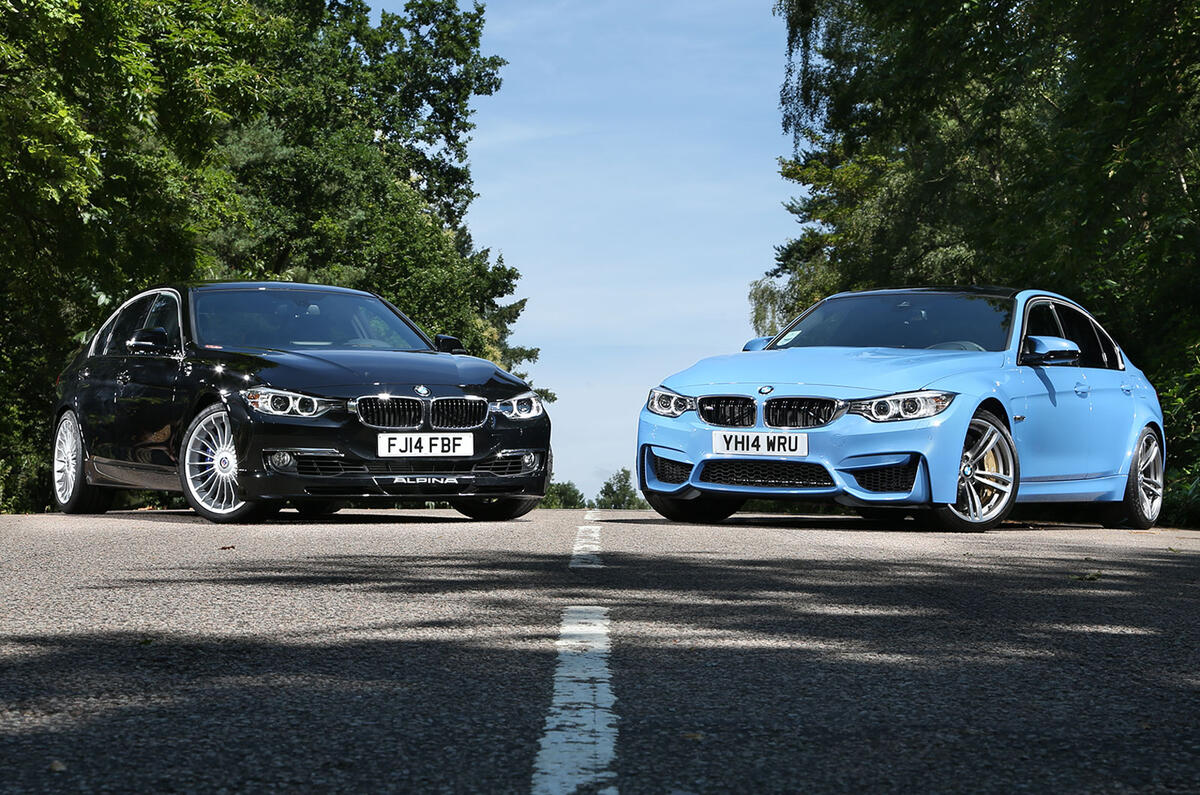
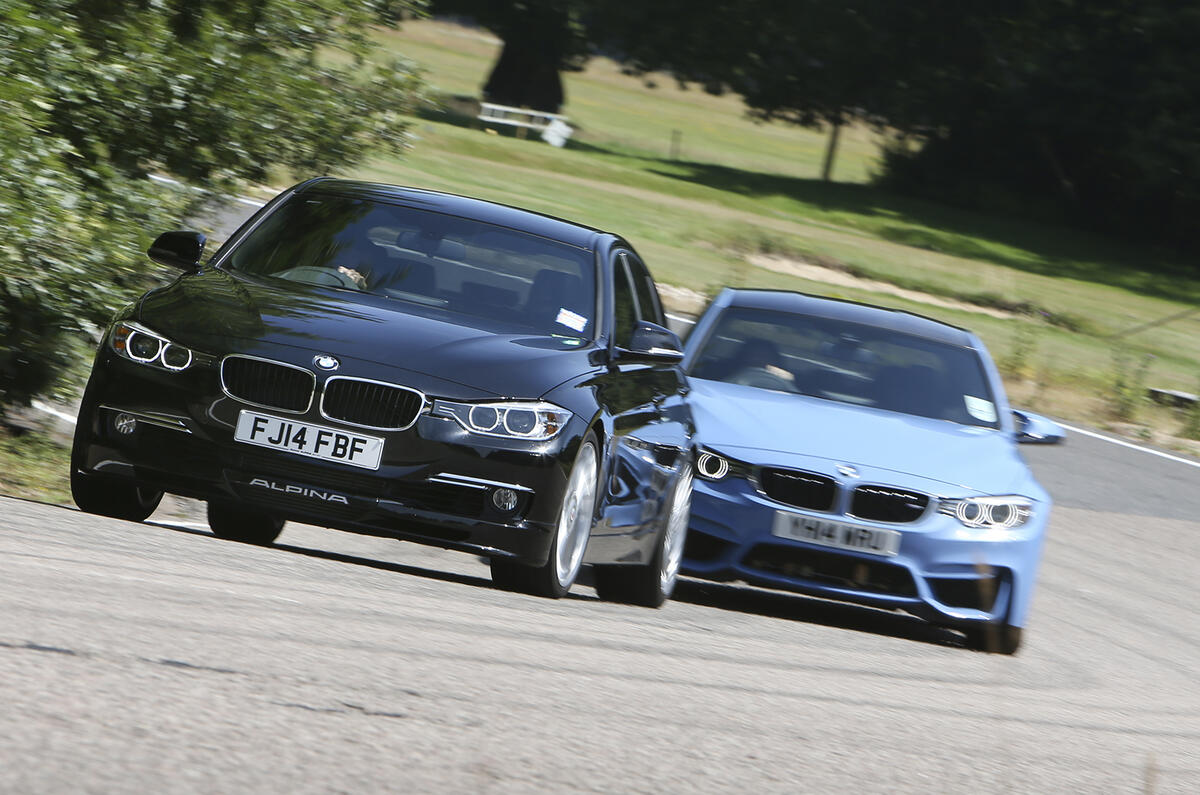
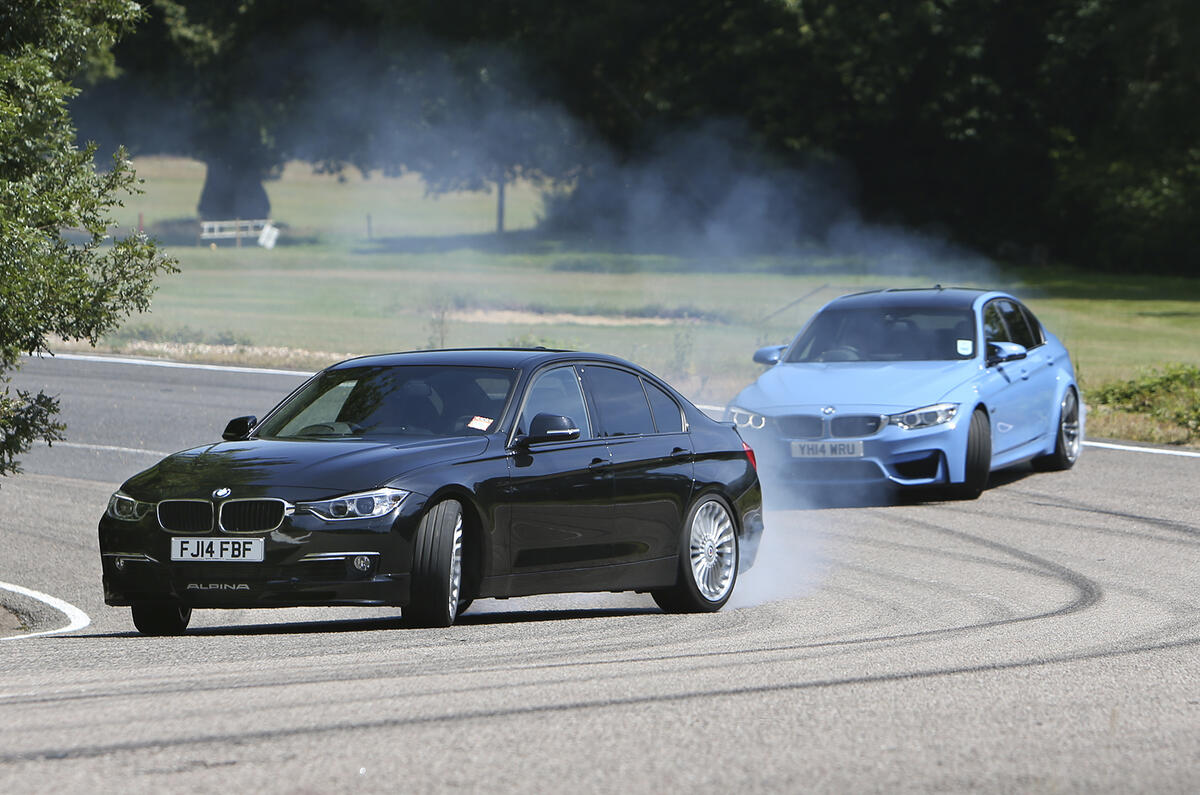
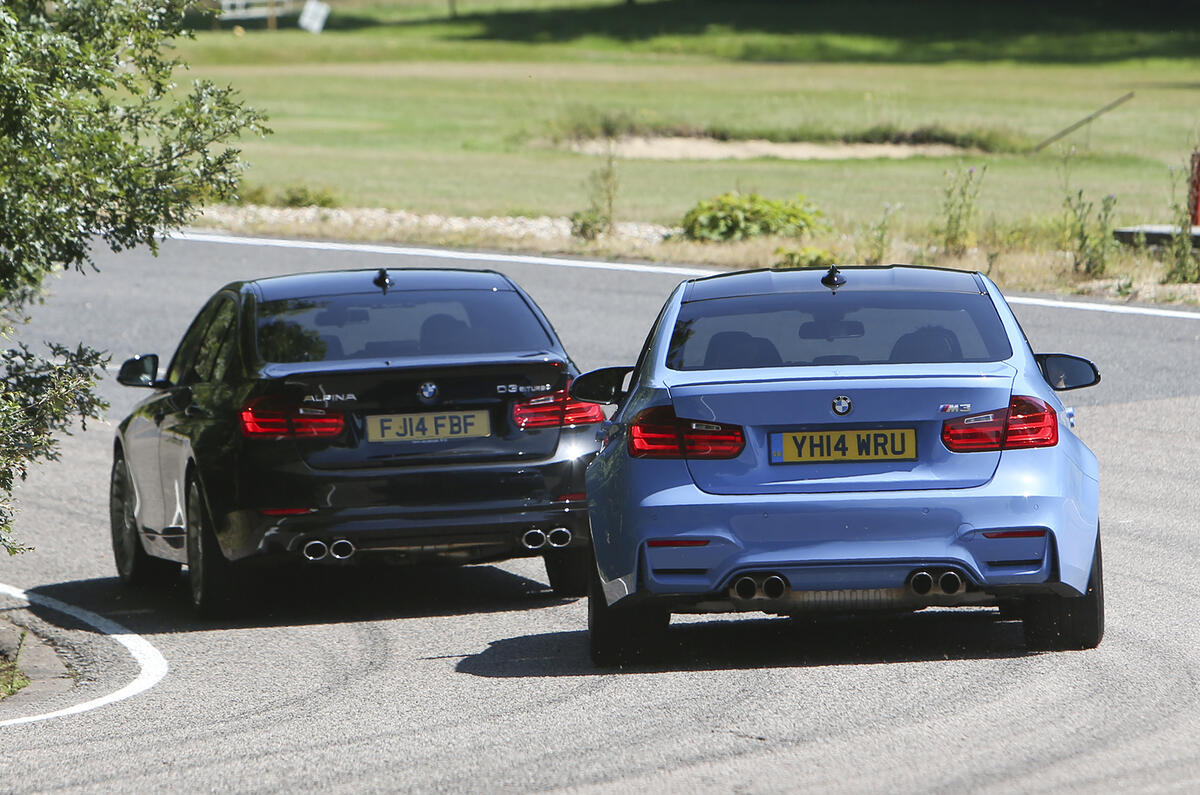
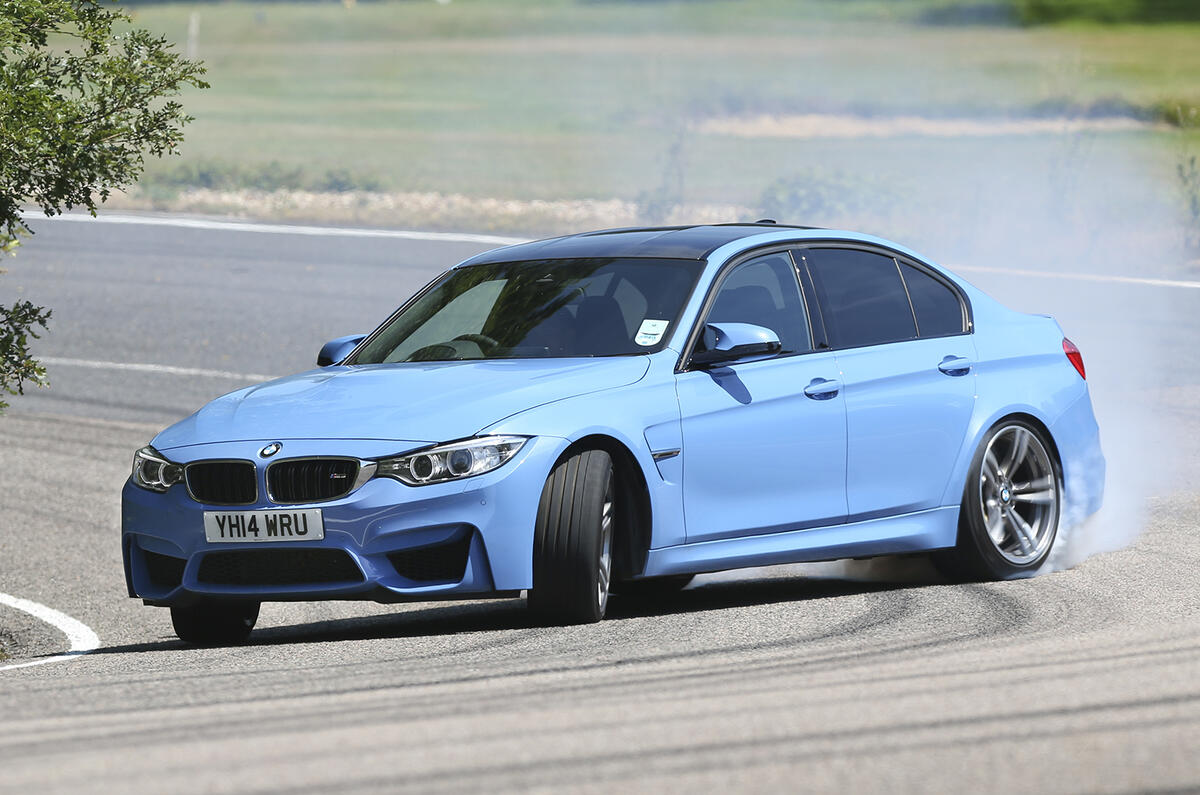
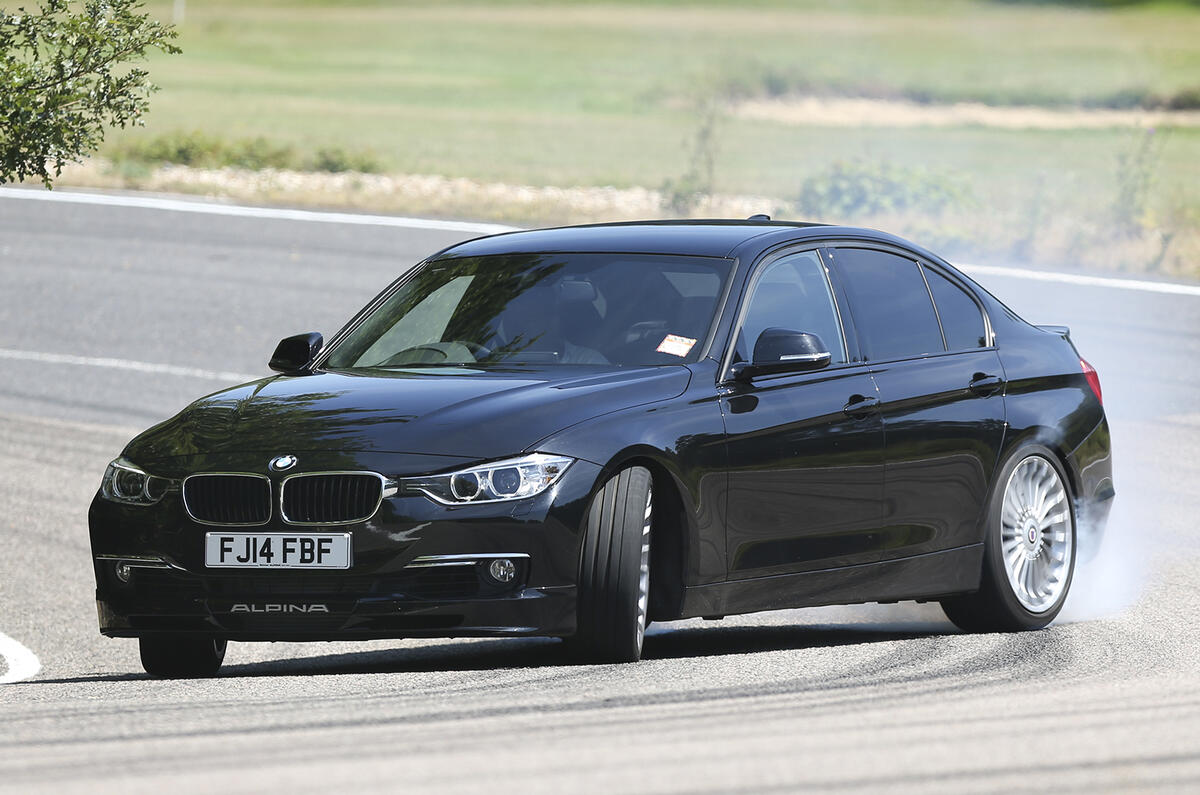

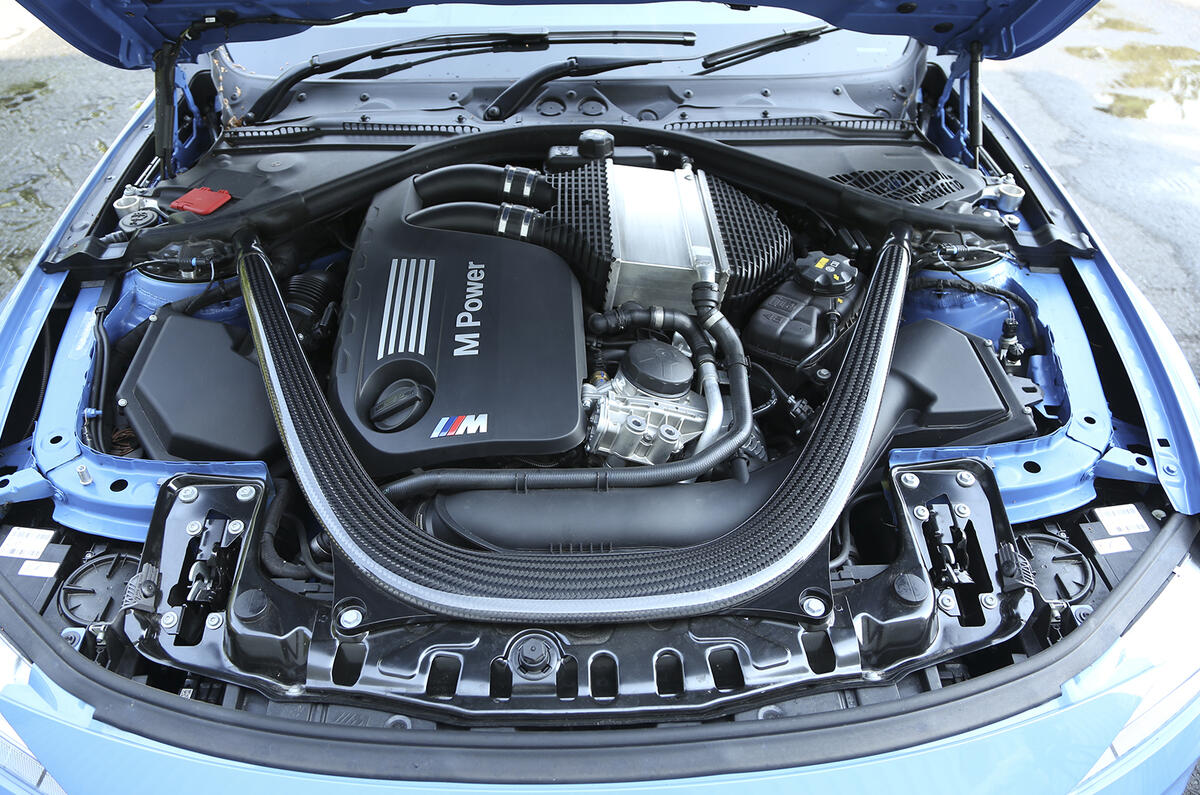
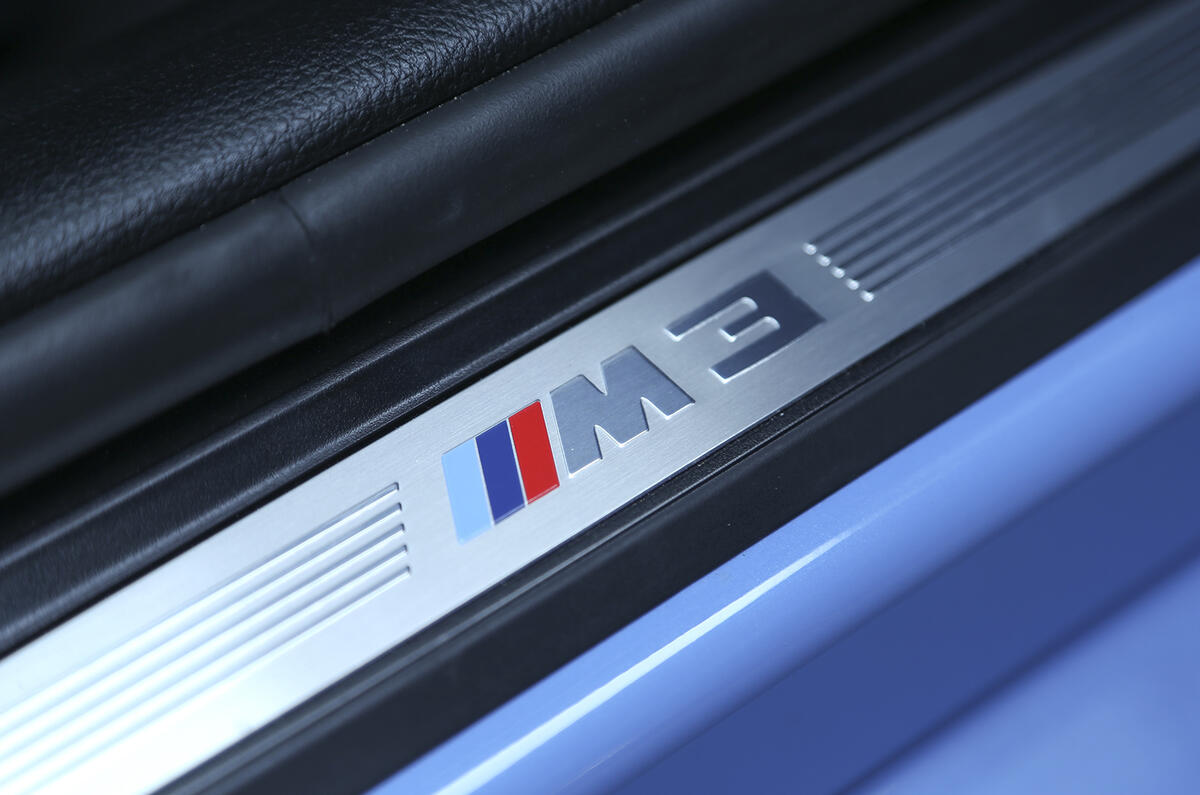
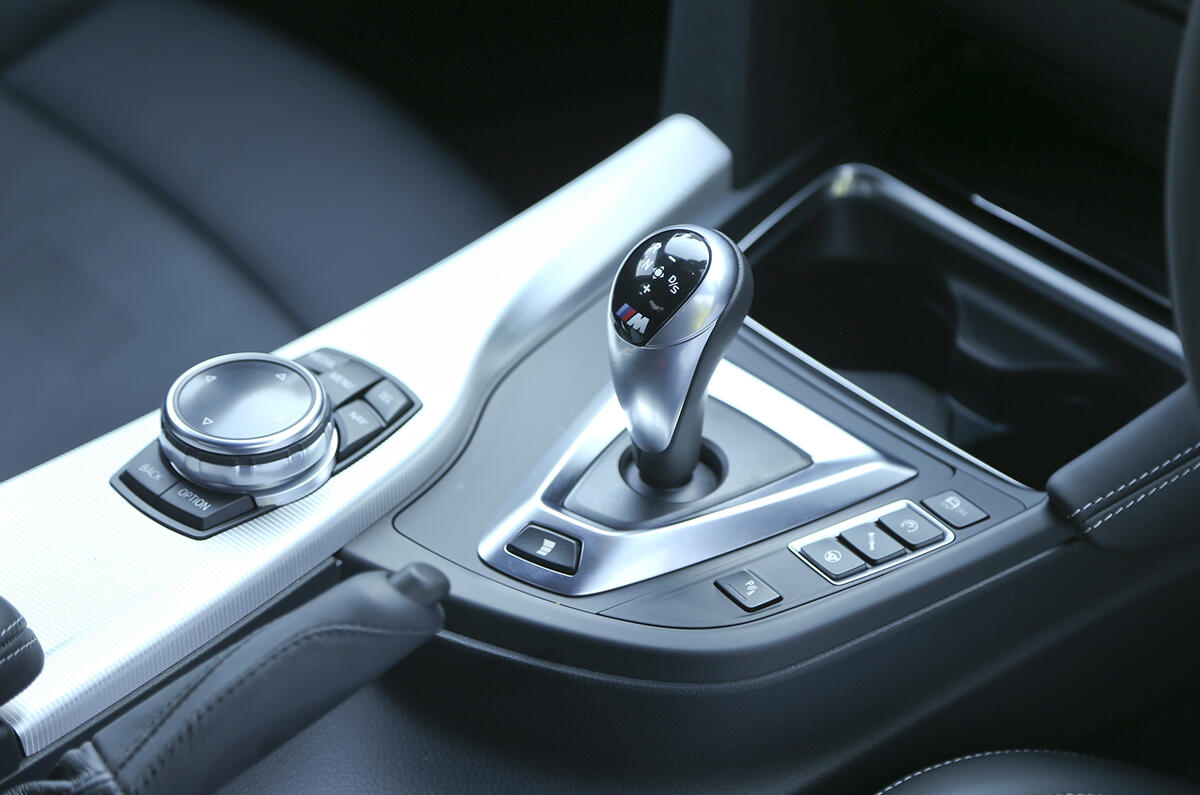

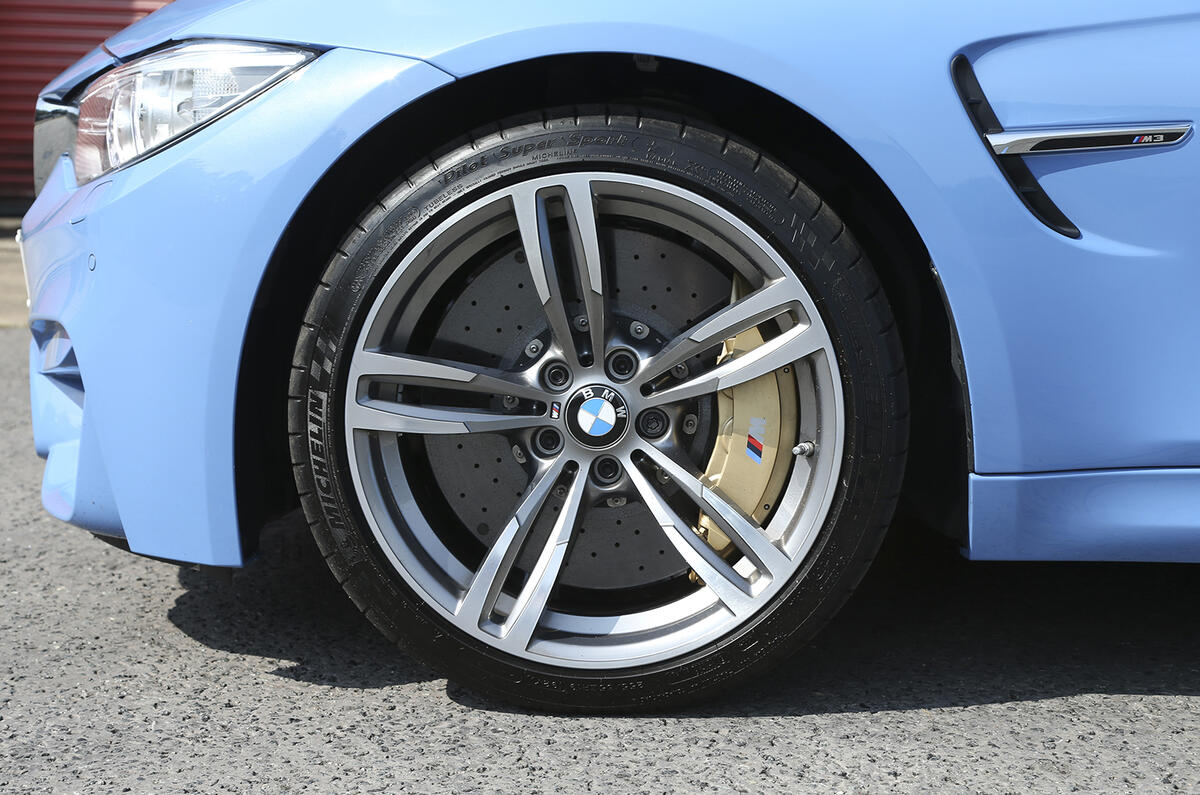
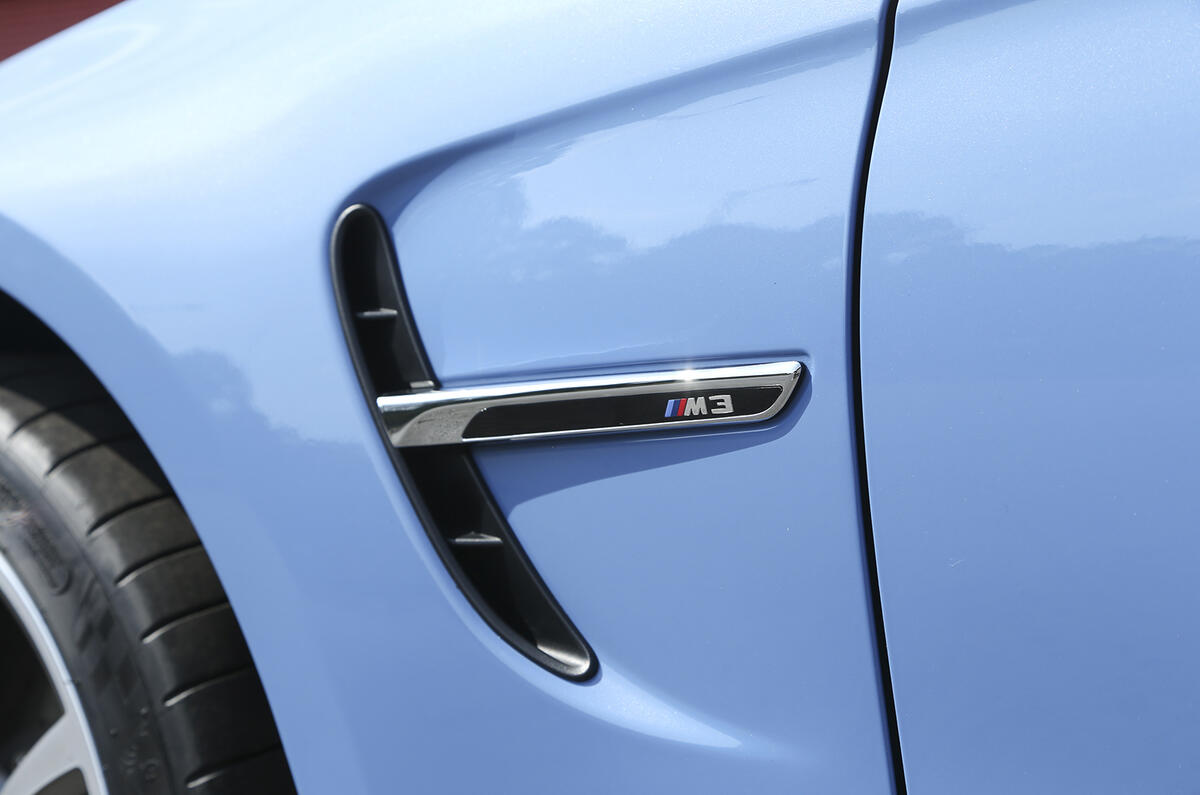
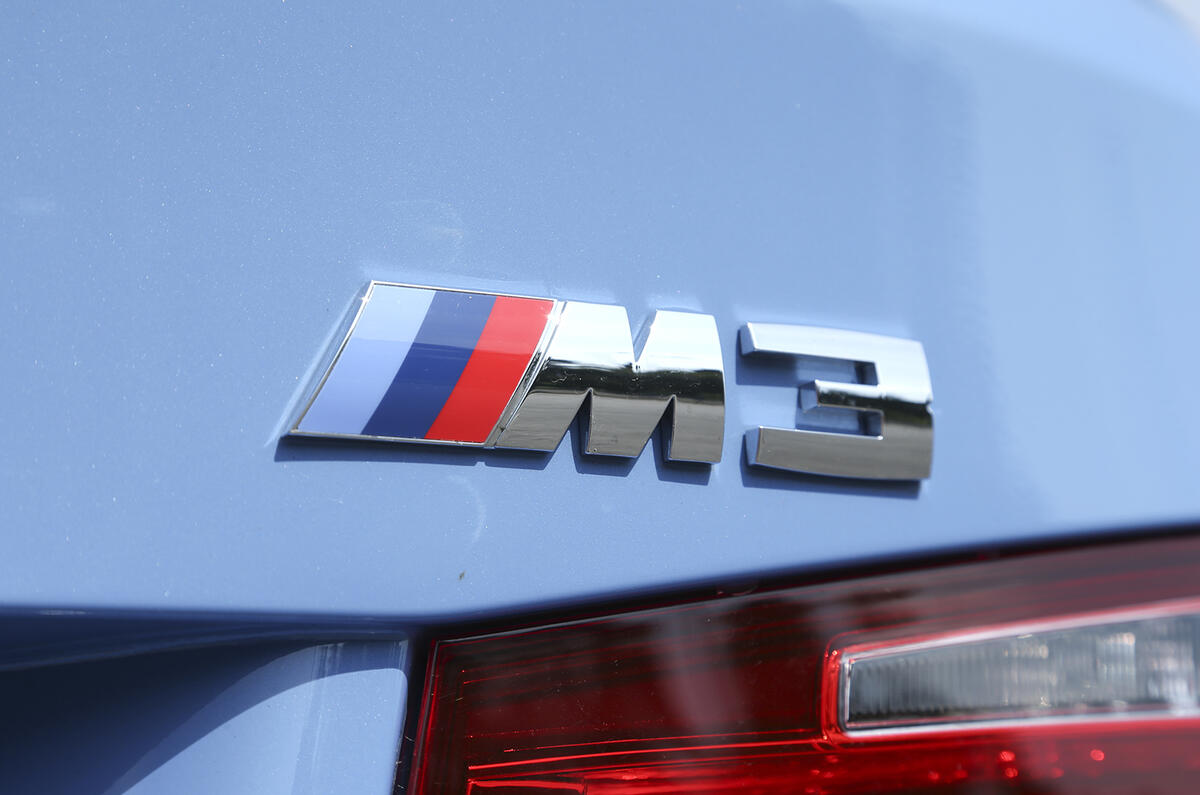

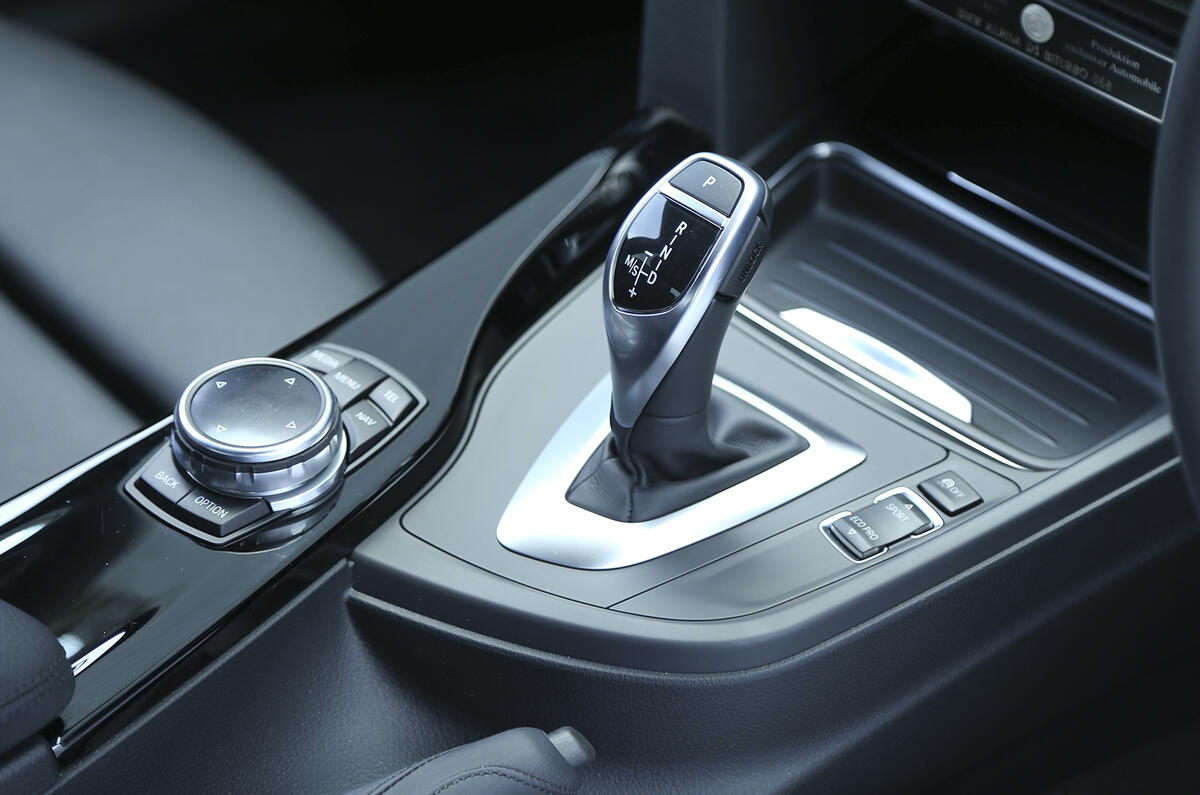
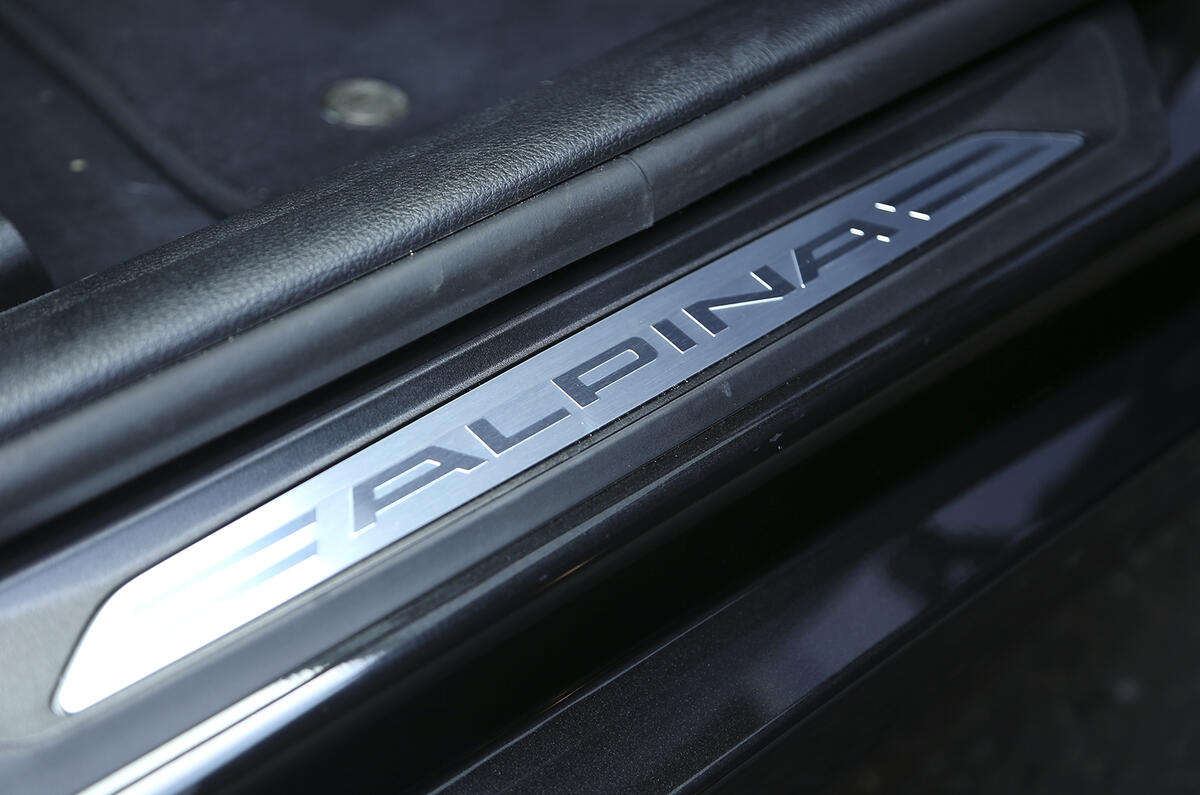
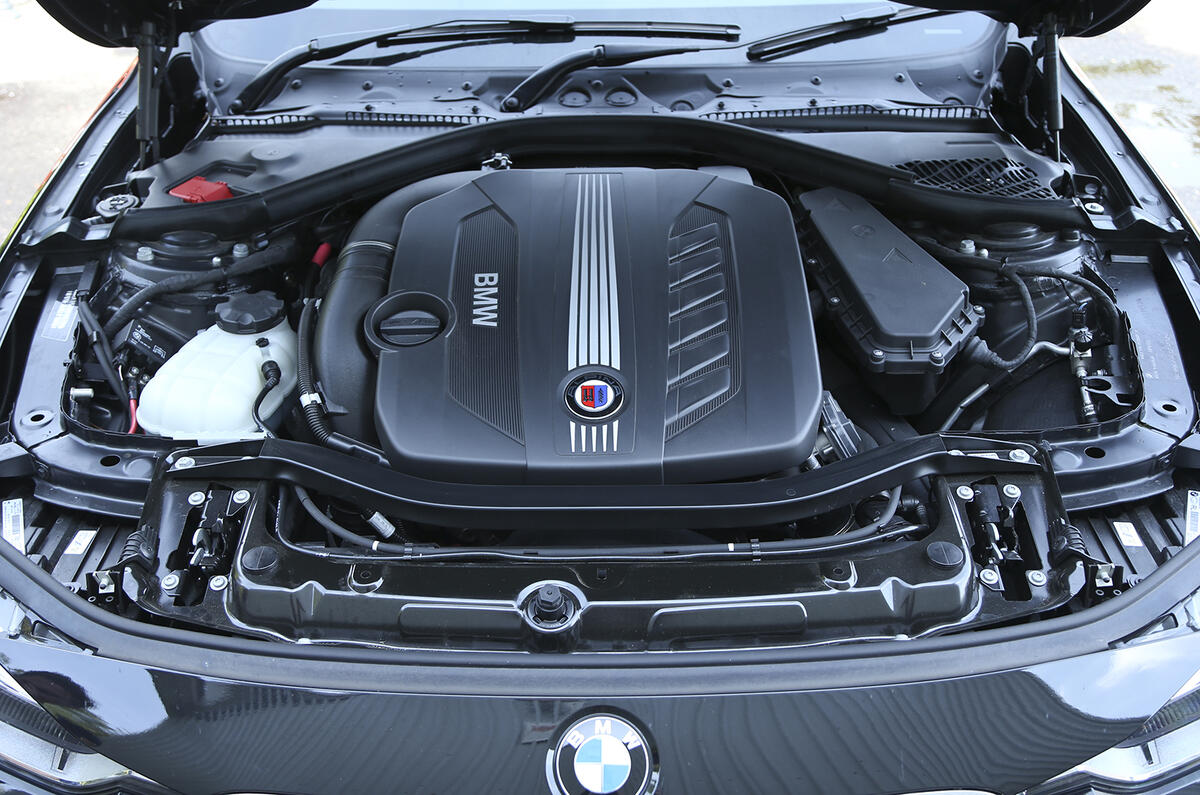
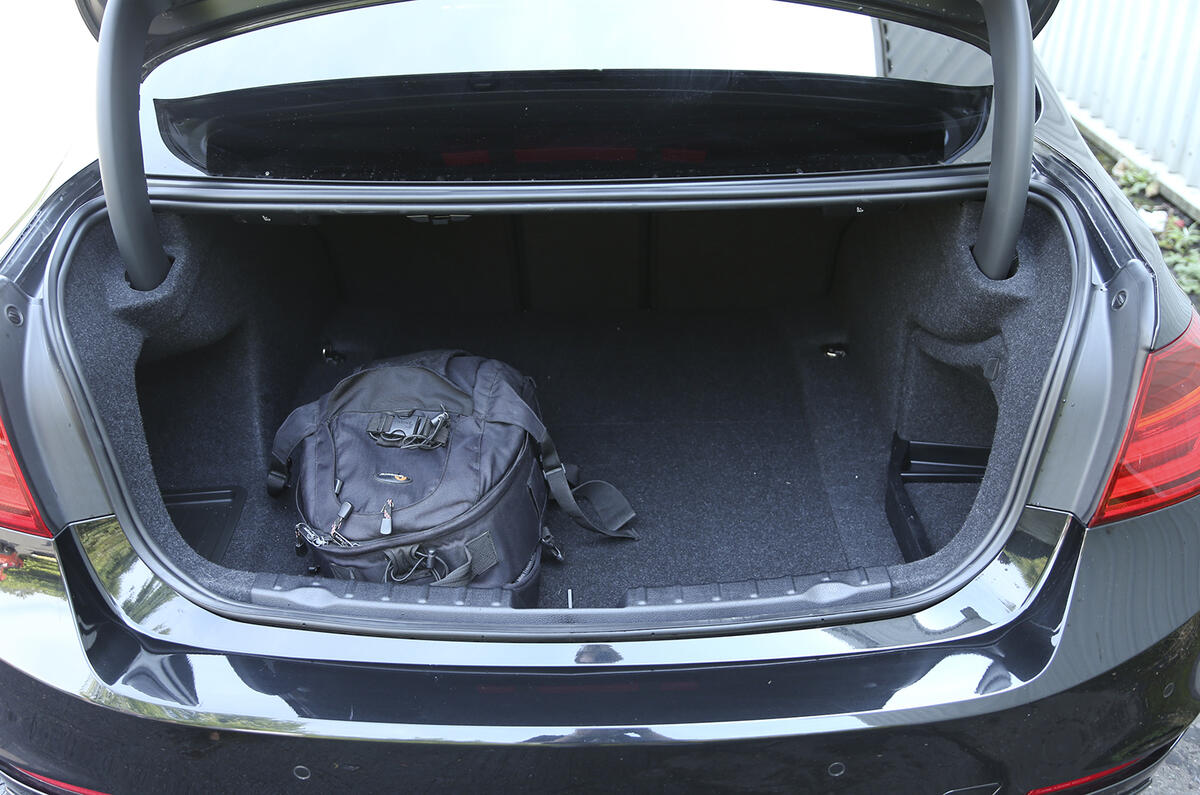
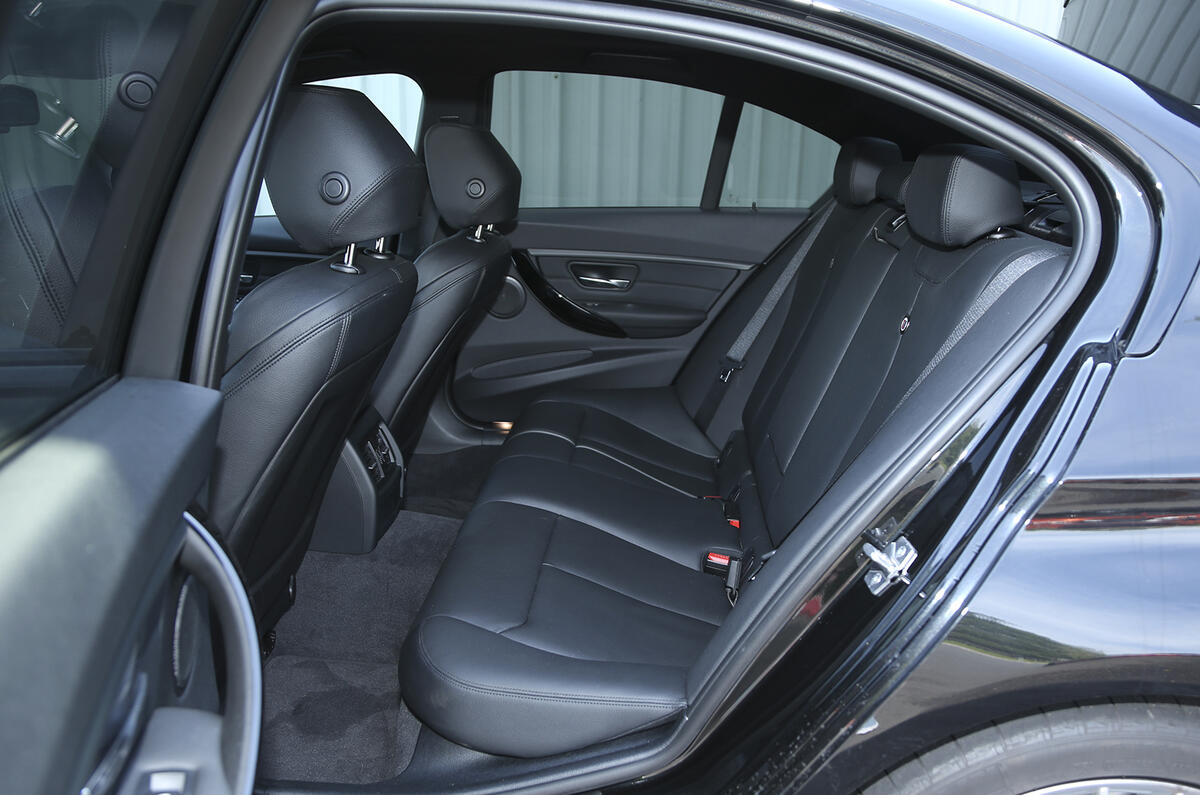
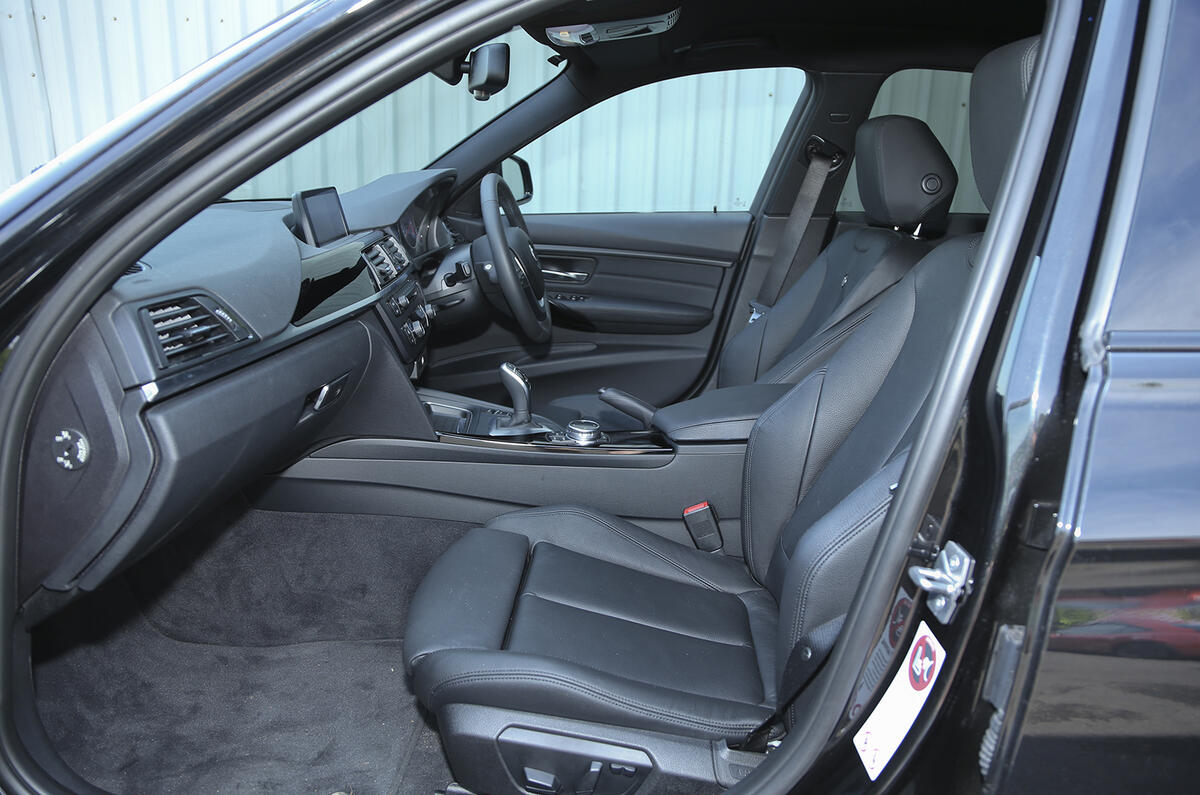
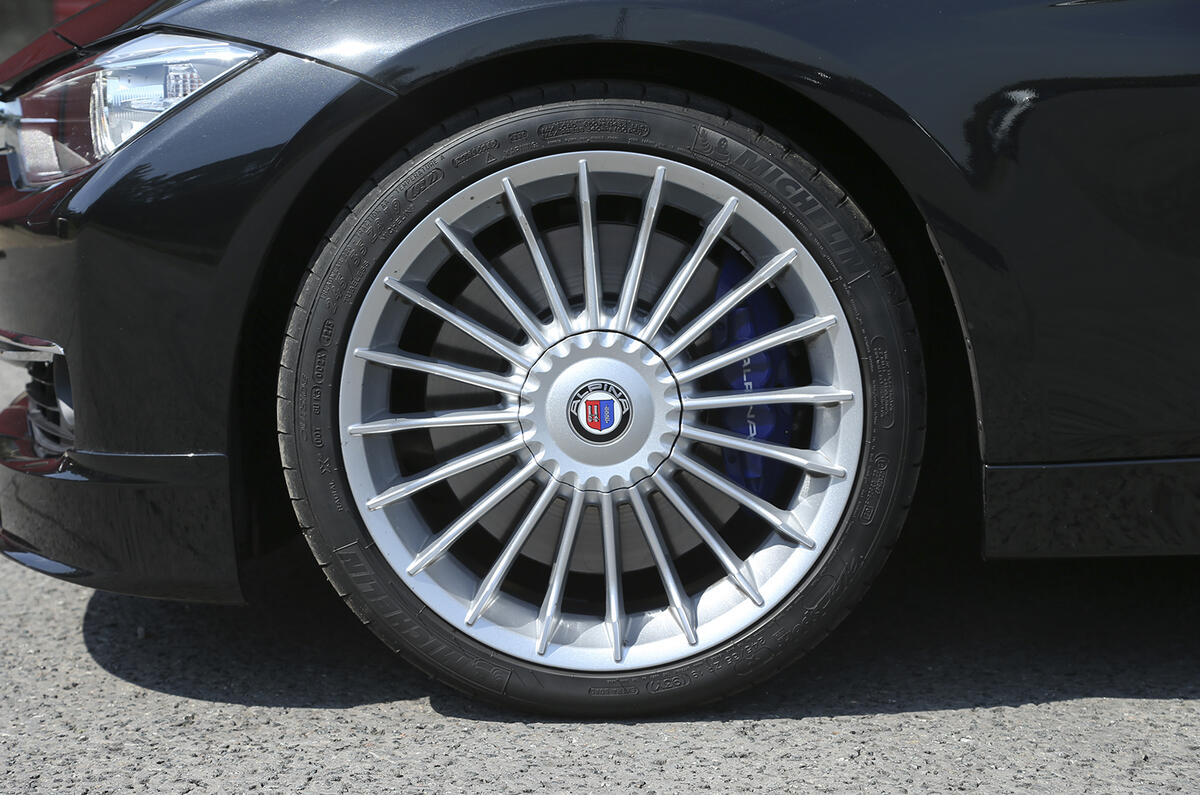
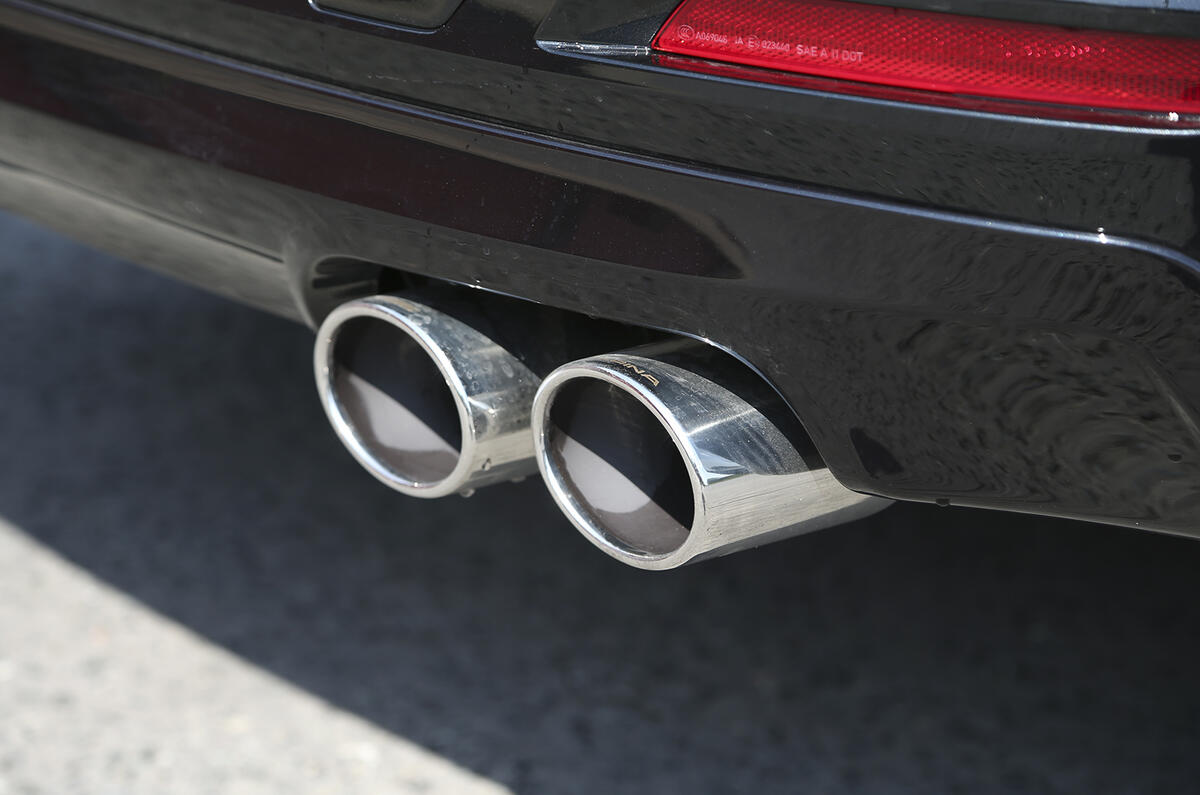
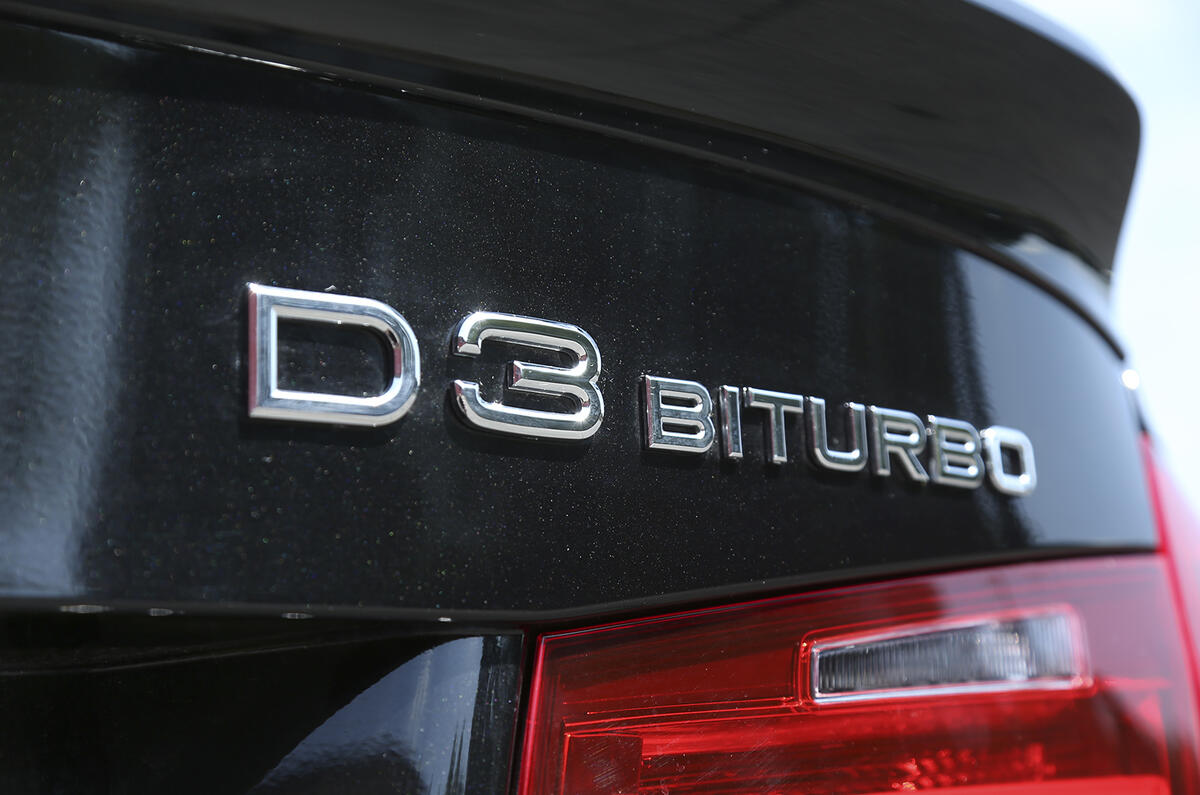

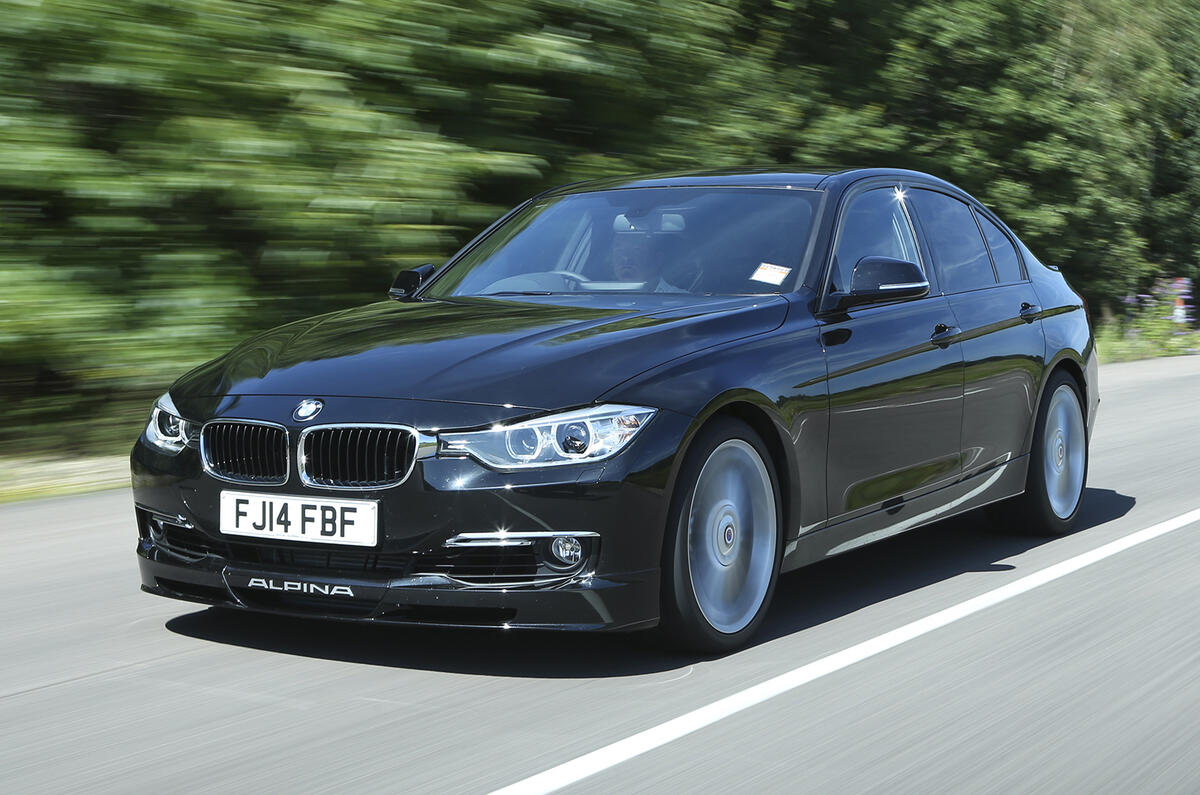

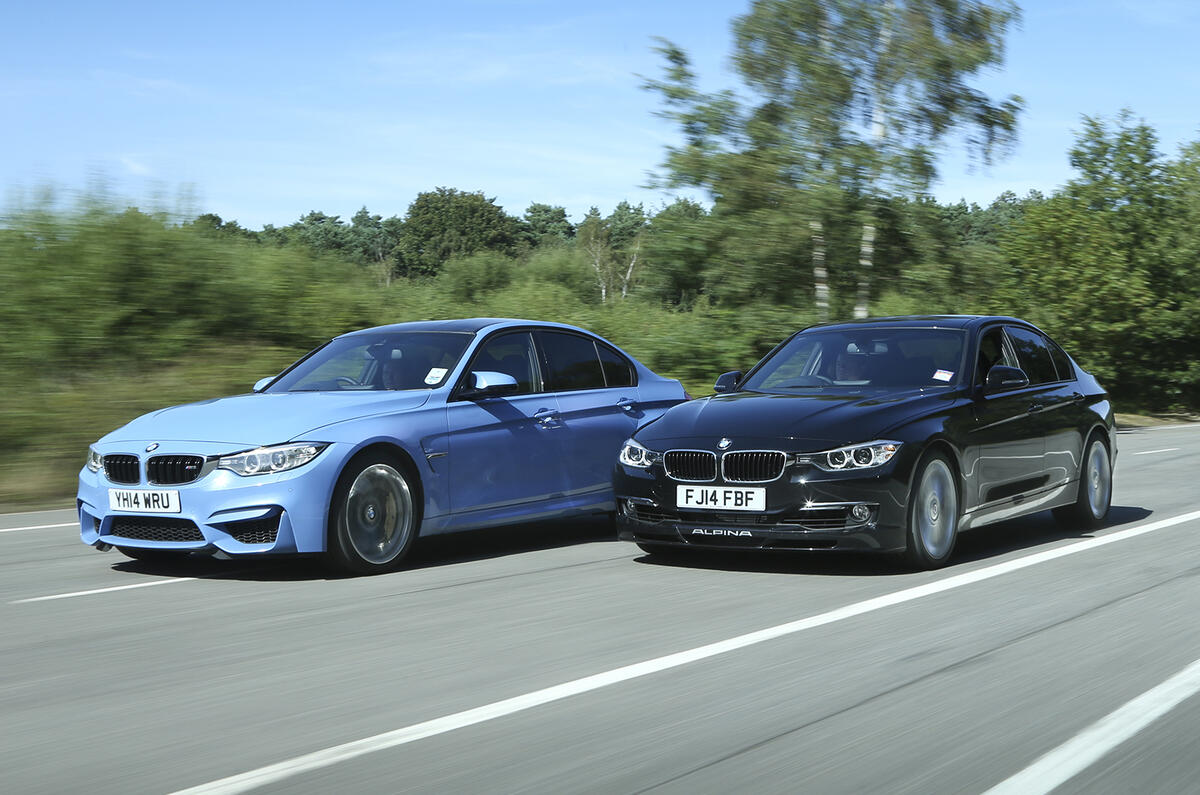
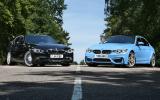
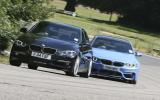

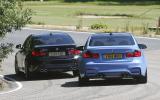
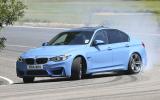
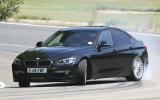
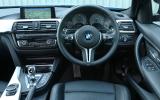
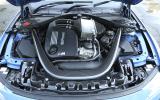
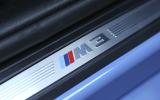
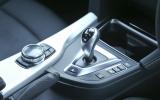
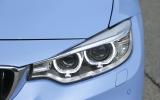
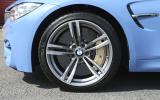

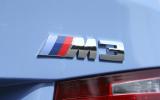
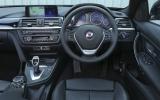
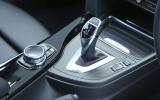
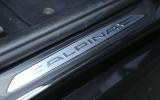
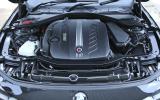

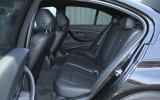
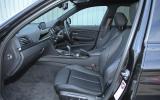
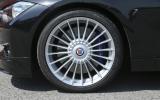
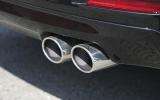
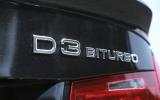
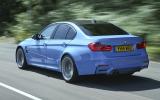
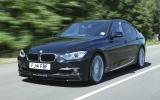
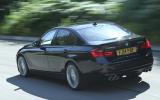
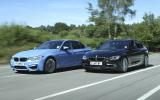


Join the debate
Add your comment
A matter of personal taste.........?
Do alpina do the D3 in estate
Poor article